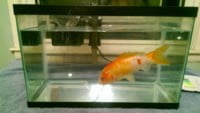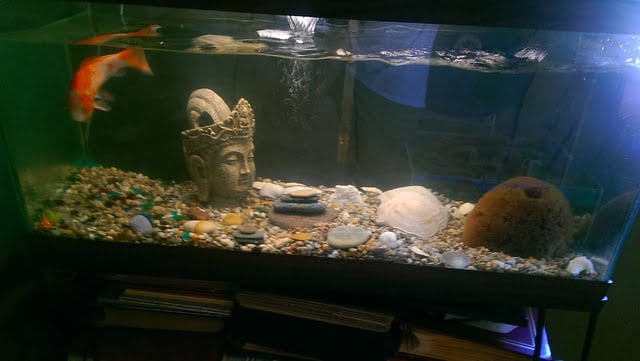pH Misunderstood
pH misunderstood by the industry and abused by many fish keepers. The pH tester may be one of the biggest cons the industry has pulled to date. The fact is, pH is not a parameter, it’s a theory that has been argued over and interpreted by experts for well over a century. Danish chemist, Sorensen came up with the concept of potential of hydrogen, and ever since we have all become advocates. Used to accommodate definitions and measurements in terms of electro-chemical cells, pH
We use it to test the health of water, however, few understand it, and many a fish will die because of it
pH misunderstood
Every master test kit, fresh or salt water includes the ever so popular pH test. The standard pH comfort zone varies according to fish species. Few fish keepers are aware. Most of these few buffer pH with bicarbonate of soda, and with dire consequences. You may have heard that low pH levels are best left alone; that inconsistent readings cause more harm than good. This information was derived from the false conclusion that pH alone is responsible for alkalinity. Our fish can only benefit from living in water with healthy pH levels, but only if KH and O2 is balanced proportionately
Understanding pH
Fish keepers have been led to believe that pH is the measurement for alkalinity; untrue. Carbonate mineral (better known as KH) alone lays claim to this title. KH gives water the ability to support the oxygen molecule, making it soluble, so that our fish can utilize it. Water will not support life without the presence of this amazing mineral. KH test results show just how base or acidic water is
What is KH?
It’s easy to understand how the misconception began; when alkalinity is raised, pH levels rise
pH test kits could easily be traded in for KH and O2 tests. The two together make up pH as far as water is concerned. Oxygen and carbonate mineral combined create a healthy aqua environment. Low oxygen levels drag pH down. Unaware, fish keepers buffer alkalinity, even though KH may be at healthy levels. By the time the pH goal is reached the fish could be severely burned, the fish keeper unaware
Optimum pH for goldfish is 8. to 8.4 ppm, which would require KH readings of 100 or a little higher. At these levels the water has a perfect balance of oxygen and carbonate mineral
The chart below parallels KH performance with maximum oxygenation results for pH. Readings above the neutral zone are base, while readings below are acidic
KH pH
120 ppm 8.2 ppm
100 ppm 8.0 ppm
90 ppm 7,8 ppm
80 ppm 7.5 ppm
70 ppm 7. ppm (neutral zone)
60 ppm 6.5 ppm
50 ppm 6. ppm (will not support life)
Have you ever heard the term pH crash? Levels are said to drop rapidly for one reason or another, leaving the water depleted of oxygen. Water is oxygenated by method of diffusion. Surface movement pulls oxygen into the water from the air above, but only if the water is free. Carbon dioxide is a gas created from the waste our fish produce. It fills a body of water keeping oxygen from entering, dragging pH levels down. In shallow water, all it takes is a rippling wave to eliminate the Co2, however, most aquariums are tall in order to save space, so increased surface action is necessary to remove the gases from the depth. The deeper the water the stronger the action must be
The infamous crash only occurs due to oxygen loss, as KH is a consistent parameter, and can only be reduced by use of vinegar (acid) or by being exchanged with water lower in carbonate mineral value
By testing both pH and KH, we can determine if our water is properly oxygenated.
- Start by measuring pH of freshwater source and fish house water, comparing the two. If they’re of equal value, water is as oxygenated as KH levels will allow.
- Next, test KH levels of freshwater source. Is the reading lower than the desired goal of 120 ppm? Buffer KH value of fish house water to the high end of the comfort zone for the type of fish you keep. Why settle for less?
- If KH readings are higher than 40 ppm of the goal, these levels will need to be lowered in order to keep fish comfortable. High KH levels are typical in regions close to the sea or regions rich in calcium
In some cases
Read Step 9 Testing Water Parameters to learn more about raising and lowering KH
Aquariums have small surface areas compared to the amount of water they hold. Most of the standard filters sold with aquariums do not provide enough, or the right kind of action needed to remove gases from water. If Co2 is a problem in your fish house, include a pond pump in your set up. Only a real pond pump provides the necessary action required for eliminating carbon dioxide from water
pH misunderstood
Air pumps; (bubblers) no matter the size will not expel gases from water. It’s argued they assist in oxygenating water, but it’s much like knocking a tiny hole in a smoke filled room. The entire wall must come down
Once the right kind of action is created, the surface must be exposed to fresh air in order for the event of diffusion to occur. Enclosed aquariums are notoriously low in oxygen
- Aquariums with high stocking levels suffer from increased amounts of Co2
- Fish that produce a lot of waste may be living in water high in Co2
- Fish houses that are not maintained properly or improperly set up may also contain high levels of Co2
Remove Co2 manually by pushing a pitcher deep into your aquarium filling it up. Pull it up and pour it out. Repeat this process several times. Test pH before and after to compare results. Do you see a jump in the measurement? If so, carbon dioxide is a problem in your fish house

The poor fish in the photo above is being eaten alive by bad bacteria, living in sick water low in oxygen due to low carbonate mineral levels and high amounts of Co2. The surface is quiet, even though an HOB filter is installed and running. The action provided by the filter does not have the power to eliminate carbon dioxide
The condition of the fish slowly deteriorated over a period of time. The fish keeper tried medications to no avail. The cycle was disrupted again and again. The fish was injured by ammonia and nitrites

The same fish was given a larger fish house. KH and GH values were buffered. Natural gravel and sea shells were added as substrate, helping to stabilize total hardness of water
To eliminate Co2, a pond pump was installed. A natural sea sponge was placed over the pump acting as a filter. The water was treated with water treatment that converts ammonia and nitrite to a safe form while beneficial bacteria rebuilt their colonies
The environment and the fish were treated with Sea Salt & Garlic remedy
Within a few short weeks the fish made a full recovery
Aquarium pond water evaporation
All rights reserved
Author: Brenda Rand